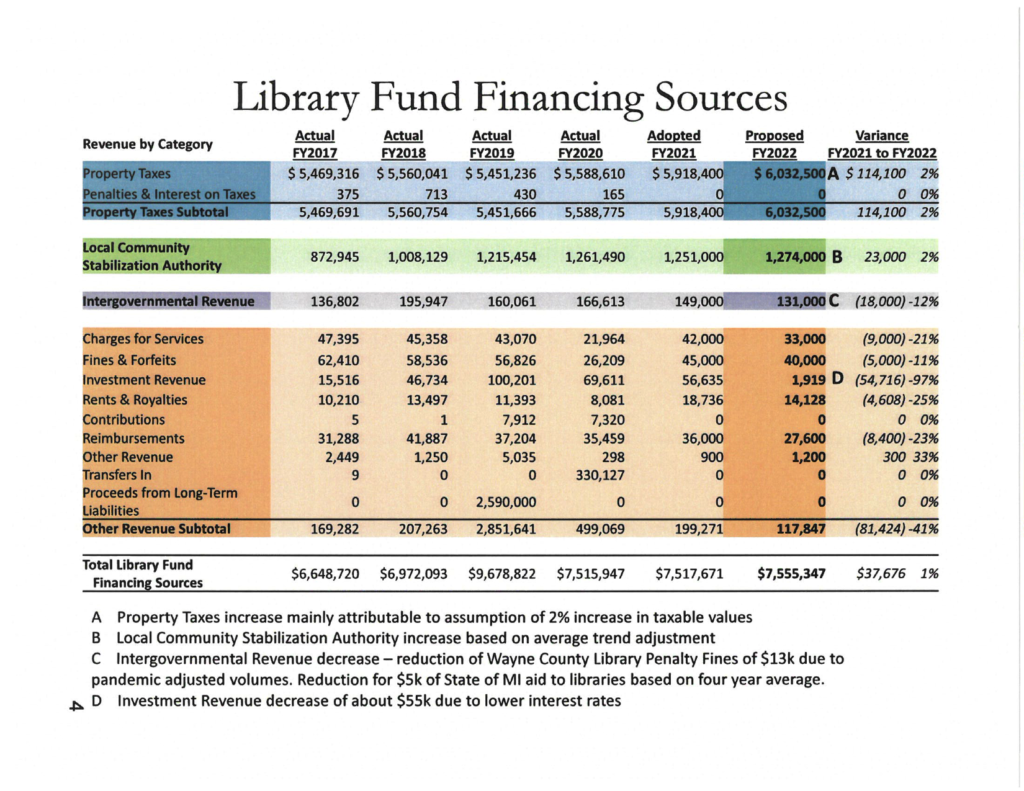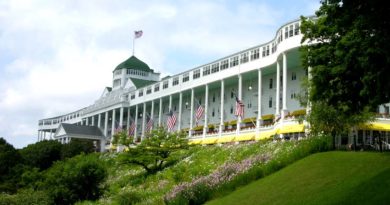Library spending in Dearborn
A group of concerned citizens has posed great questions to the Dearborn Library officials about an increase of spending in the six years, totaling about six million dollars. We salute the group and encourage more citizens to question their public officials about spending, budgeting, and services. The city is asking residents to renew the library millage on August 3.
Here are the questions and answers:
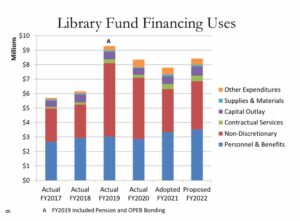 1. We have two small libraries and one slightly larger one. Why do we require 100 employees for 3 Libraries albeit 70 are part-time? Have we been paying salaries while HFCL has been closed for construction? The financial statements don’t demonstrate a reduction in salaries.
1. We have two small libraries and one slightly larger one. Why do we require 100 employees for 3 Libraries albeit 70 are part-time? Have we been paying salaries while HFCL has been closed for construction? The financial statements don’t demonstrate a reduction in salaries.
2. Why is there a $400k increase in Salaries in 2020 during a pandemic (~20% increase)?
3. Why is there a shift of funds to the general and facility funds of excess voter-approved dollars for the library?
4. The library millage was recommended by the community task force established in 2010 in order to close a budget shortfall that had manifested as a result of the housing crisis and subsequent decline in property values. Today, a decade later, there is no longer a housing crisis, nor a decline in property values, and therefore no longer a necessity for a separate library millage. The general fund allocations will suffice.
5. Covid and Hazard pay expenditures listed in the financials should be covered by Federal funding and need not be included when assessing overall library expenditures.
6. City council has been levying 0.7 mills for the Library budget annually and asking the voters for the extra 1 mills. This is double taxation of the residents!
7. The city needs to stop politicizing the Library Fund and using it as a pass-through fund for other purposes.
8. Explain to your residents how the library had been operating prior to the existence of this separate millage – previously, libraries operated through the general fund. This would NOT be a loss of 60% of their operational funding, rather a source reallocation. Instead of coming directly from taxpayers in the form of a library millage, it would come from the taxpayers through the general fund (which currently has an estimated surplus of $24M).
Here are the answers from the Director of the Libary Maryanne Bartles:
I have been the Director of the Library since 2006 and prior to that, have many years of service in other library positions. My goal since 2006 has been to make the Dearborn Public Library not only a library which embraces 21st century technology but also serves as a vibrant community space for all ages.
The challenge is that not only is technology expensive, but people in this City differ widely about what they want from the library. It is a delicate balance trying to meet all these competing needs. A very simple example is the purchase of a book. But it is not just one book – some want the hardcover version, some the paperback, some the e-book, some the e-audio, some don’t want the book but they want the DVD if it was made into a movie, others want the Blu-Ray version, others want it streaming. We do monitor demand for each of those formats and purchase accordingly. Our mantra is to be good stewards of the money the community has given to us.
Regarding buildings:   The community seems recently divided about the need for library buildings. While some may believe we do not need a physical structure, others will disagree. I still get requests to re-open Snow Branch Library. Before the HFCL closure and then COVID, over 320,000 people visited the Dearborn Libraries annually. We are only open about 322 days a year. Over 24,000 participated in library programs. While the buildings are not important to some people, they are very important to others.  Libraries are a public repository for educational programming and entertainment. Learning and self-improvement.   Our model is consistent with the prevailing model in this country. There are over 16,500 public libraries in the U.S. They are critical lifelines to people who do not have the means to purchase books, computers, kindles as well as home internet access. We have no public library building in the south end. There was a cry to provide library service there. Several years ago, through a $100,000 grant, we set up a remote locker at Salina school. Students and members of the community are able to request library material and our staff deliver them to the locker. The grant money has been spent, but as soon as allowed, we will be back in the school providing library access to the community.
The Library gathers usage statistics continuously. As you can imagine, the closure of HFCL for renovation, followed immediately by COVID has wreaked havoc with our year-to-year benchmarking data. Our Annual Reports appear on the library website: Library Administration : Annual Reports Scroll to the bottom half of the page. Not only will you see our efforts and statistics, but there is a list of all our HFCL renovation improvements – many of which we have not been able to use because of COVID. We were set to reopen HFCL on April 25, 2020.
Regarding your questions:
- Why do we require 100 employees for 3 Libraries albeit 70 part time
The Library currently employs 29 Full Time (FT) staff. Most are at HFCL as we are open the most hours. Of those 29 staff, 2 are assigned to Bryant Branch and 1 is assigned to Esper Branch. In addition, a supervisor splits his time between Bryant and Esper. Part Time (PT) are more difficult to budget. The City budgets by slots (aka people). I budget internally by the hours that I need filled. If all PT staff worked the maximum (28 hours per week), I would need less staff to fill those hours. However, PT staff are high school students, college students, people managing more than 1 PT job, and retirees. They often are unable to work 28 hours a week. So – a 28- hour position – might take 1 slot or may take 2-3 slots to fill those hours. I do not know from year to year what that mix of PT staff will be. It is the same expense to fill those hours, just more staff. I hope that makes sense.
 Have we been paying salaries while HFCL has been closed for construction? This is a question I saw elsewhere that I would like to address. Before HFCL closed for renovation, the Dearborn libraries were open to the public a total of 131 hours per week. When we closed HFCL, we mirrored HFCL hours at the branches. Our total open hours were 124 hours per week. In addition, we retained a small group of staff at the temporary warehouse where the majority of HFCL library material was stored so that we could fill patron requests from the branches. Administration was there as well, managing day-to-day operations of the library as well as the renovation project. Several PT staff resigned (just part of normal turnover) and they were not replaced during the HFCL renovation. Actually we are just replacing them now because we had even more resignations during the last year. So yes, we were right-sized for the operation of the library during the HFCL closure.
- Why a 400k increase in Salaries in 2020 during a pandemic (20% increase) I’m not 100% sure what you are comparing. The only salary increase since 2018 will be a 2% raise in July 2021. PT staff will receive a modest raise this May, averaging 28 cents per hour more.  Please keep in mind that comparing Actual expenditure to Adopted or Proposed Expenditures is like comparing apples to oranges. We do our best to budget what we plan to spend but with resignations, PT staff not working their full hours etc., it is difficult to budget exactly what we end up spending. Please feel free to explain your comparison further and I will try to answer.
- Why the shift of funds to general funds to cover other things. This is the response I shared with another resident, sorry it is so lengthy:
During FY2013, the Library transitioned into its own separate Special Revenue Fund in which it began to collect property taxes as levied by the voter-approved 1 mill. (Prior to FY2013, the Library was part of the City General Fund). The authority for any library millage collection can be found in this manual: Library Law Handbook 397.201
Because the property tax from 1 mill was not sufficient to operate three libraries, during FY2013 and FY 2014, the General Fund contributed $4,000,000 to the Library as a subsidy. In 2019, upon request, the Dearborn Library Commission approved the return of $1,000,000 to the City General Fund.
In addition to a voter-approved library millage, the City Council has the authority to levy up to 1 mill to support the Library. From FY2015-FY2021, the City Council has levied anywhere from .54 mills to .78 mills. The current Council approved millage for the Library is .69 mills.  Because of this additional millage, the Library has not needed a subsidy from the General Fund.
Also, from FY2013-FY2020, the Library was not paying the annual service fee for City-provided services (e.g. Payroll, Finance, Purchasing, Legal etc.). Other City departments which are not part of the City General Fund pay this annual service fee. Finance prepared an analysis of the total amount due for those services from FY2013-FY2020. The previous $1,000,000 payment was subtracted from that total, and the Library paid $318,112 in September 2020. Going forward, each year starting this FY2021, the Library pays an annual service fee to the City. This year, the fee is $185,000.
- The millage was again 10 years during an economic downturn and for renovations. Both have passed. Prior to the millage, the Library was part of the City’s Operating Budget. Now, we receive no General Fund money and the millage provides 80% of the Library’s revenue. Almost all public libraries are funded by millage.
- City council also has been levying 0.7 mills for the Library budget annually and asking the voters for the extra 1 mulls. Double dipping here! I completely disagree regarding double-dipping. It takes more than 1 mill to run the library. As a City Library, the Council, per State law, can only ask the voters to approve up to 1 mill. State law allows the Council to levy the additional millage needed for operations, up to 1 mill. Millage laws for district, county and township libraries differ.
- Covid and Hazard pay expenditures listed should be covered by Federal funding and need not be included. While we certainly hope that Federal funding will reimburse us for COVID expenditures, it is not an immediate reimbursement. The vendor, however, must be paid immediately when services are rendered. We must budget for it or we can’t pay the vendor. The struggle with budget requests is these are prepared in October/November of the previous year, based on what we anticipate will happen. By July 2021, COVID requirements will more than likely change. Should the Library be fortunate enough to receive reimbursement from federal funds for any eligible expenses, those dollars would be recognized as reimbursement revenues and be placed in the Library’s fund balance account. The fund balance account could be used to cover expenditures in subsequent fiscal years.
Regarding your comment about investing in technology. We have done so, in a multitude of ways.
- In July 2021, we will increase our internet circuit speed from 400mb to 500mb; Branch libraries will increase from 100mb to 150mb. The cost for the new speed is less than the previous contract due to a well-negotiated agreement with the vendors by our library cooperative, The Library Network (TLN). We are reimbursed for a large portion of these costs through the federal e-rate program.
- Last summer, we installed wi-fi devices on the exterior (both north and south) of HFCL so that people could access the internet while outside the building – very helpful to our residents without internet access at home. In the near future, we hope to be successful in extending exterior WiFi coverage at our branch libraries through the American Rescue Plan Act (ARPA). The ARPA dollars earmarked for Michigan Libraries are being managed by the Library of Michigan and I have been working with their management team letting them know our prioritizes (there are several). Our priorities must match those set by the Institute of Museum and Library Services (IMLS) which is the federal government agency in charge of Library ARPA money.
- We are continually expanding our online services (streaming, downloadable, and reference resources for all ages). Far too many to mention so I will share the links from our website: eMedia   Alphabetical Listing of Databases & Online Resources      Youth Services and Online Resources
- We try very hard to reach our residents through various online outlets (Facebook, Twitter, Instagram), through targeted e-mails, through newspaper press releases and through our pages in the City’s home-delivered Back Fence
I’ve gone on much too long but I believe that if you read our annual report and visit the library webpage https://dearbornlibrary.org/ you may find out things about the Dearborn Public Library that you didn’t know.
This email is meant to share documented Library facts which will hopefully clarify any misperceptions and prevent the spread of misinformation. I would be happy to answer any additional questions to the best of my ability.
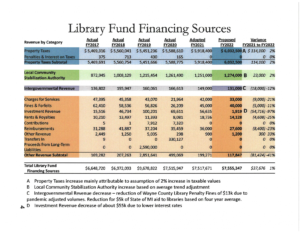
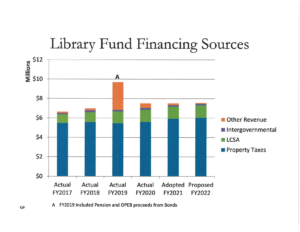
Maryanne Bartles
Library Director
Dearborn Public Library
313-943-2049

